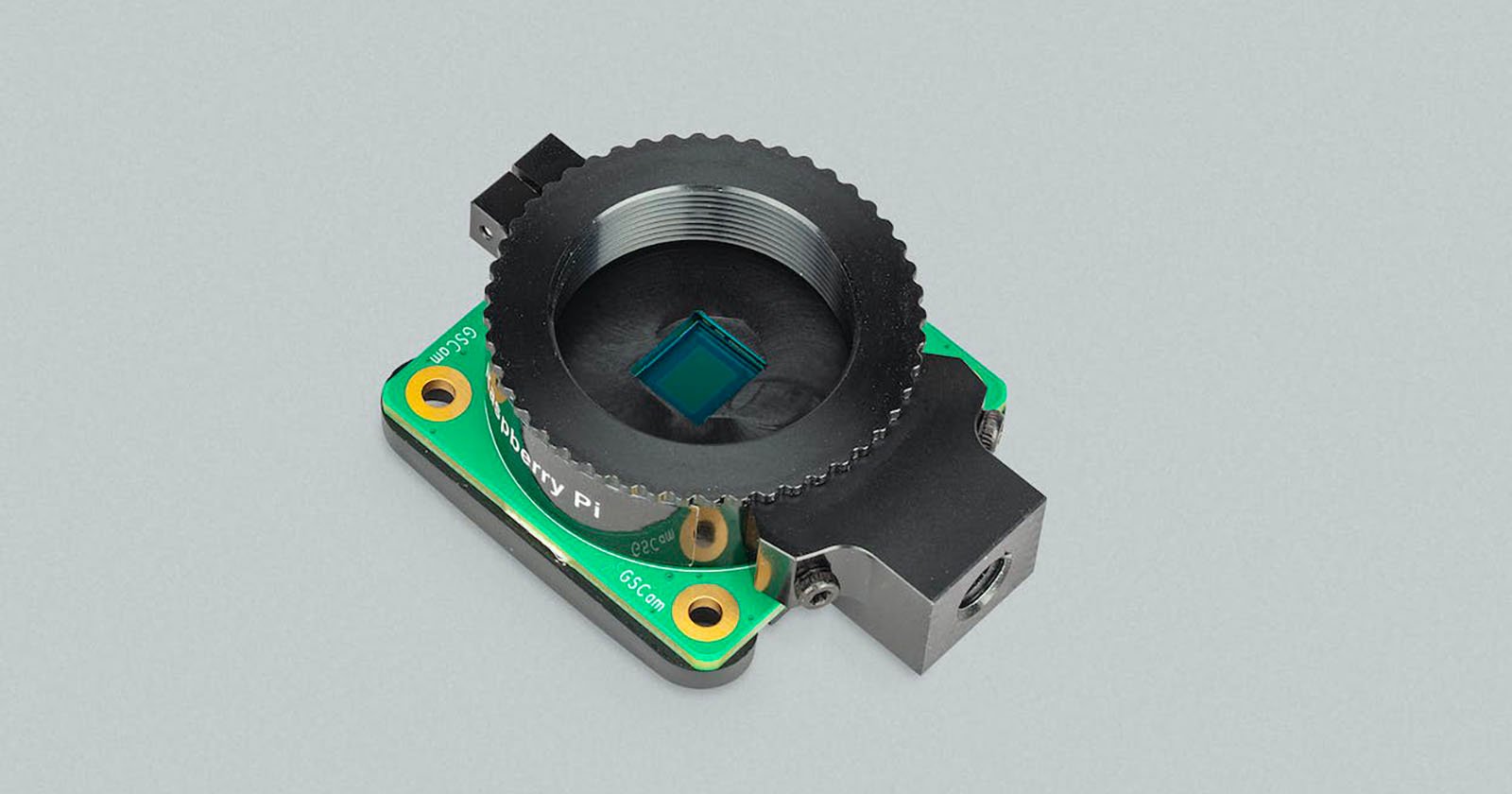
Raspberry Pi’s new 1.6-megapixel Global Shutter Camera module promises instantaneous readout across the entire image area, eliminating rolling shutter distortion.
As reported by Engadget, the new module costs only $50, which is competitive with other Raspberry Pi camera modules, which range from around $25 to $40 through DIY stores. However, the global shutter design has a resolution tradeoff, as other Raspberry Pi camera modules offer 8-12 megapixels.
The new global shutter camera is built around the Sony IMX296LQR-C image sensor and requires a Raspberry Pi board with a CSI camera connector. The Type 1/2.9 image sensor stores all light signals simultaneously, allowing for distortion-free image capture of fast-moving objects, ideal for machine vision, scientific, and hobbyist applications.
Compared to a traditional “rolling shutter” image sensor, which captures data from the sensor line-by-line, a global shutter captures the entire image in a single moment. The difference is most obvious when considering fast-moving objects. Consider below an example image from Canon, which the company shared when it announced the development of a full-frame 19-megapixel global-shutter sensor last December.

Notice the badminton racket. In the global shutter example on the left, the racket’s shaft is straight, even though it’s moving very fast. In contrast, a traditional image sensor, shown on the right, exhibits rolling shutter distortion because the image data for the racket is being read line-by-line. Even though the readout speed of a traditional sensor can be very fast, especially with modern stacked image sensors, the racket is moving so quickly that it’s in a different location each time the image sensor reads a new line of data. Even the fastest rolling shutter image sensors are susceptible to rolling shutter distortion in certain situations, albeit to a lesser degree as sensors become swifter.
![]()
Put another way, a rolling shutter sensor design begins the exposure at the top of the image sensor and reads down the image sensor. When a single video frame is recorded and the next frame begins, the sensor has just completed the exposure on the bottom row. On the other hand, a global shutter begins and ends the exposure across the entire image area simultaneously. There’s no progression of readout down the sensor — it all happens at once.
The Raspberry Pi Global Shutter Camera features a large 3.45?m pixel size, a benefit of its relatively low resolution. It promises good low-light performance, and Raspberry Pi says that its resolution is sufficient for machine vision applications, which are especially susceptible to distortion, like rolling shutter artifacts. The sensor offers exposure times as short as 30?s with adequate lighting, ensuring utility for high-speed photography.
![]()
The camera module includes the same C/CS-mount as the Raspberry Pi High Quality Camera module, so it’s compatible with 6mm CS-mount and 16mm C-mount CGL lenses available through retailers.
A detailed list of specifications and system requirements is available on Raspberry Pi’s website. The company continues to work on resolving supply chain issues, and it believes supply should recover in Q2 2023. Assuming adequate stock, the new global shutter camera is available through authorized resellers now.
Image credits: Raspberry Pi




